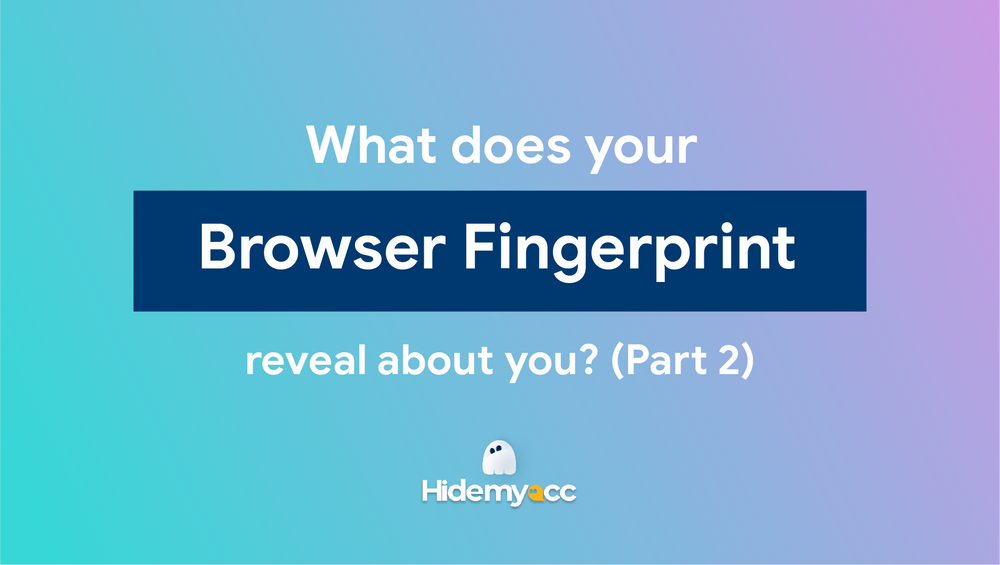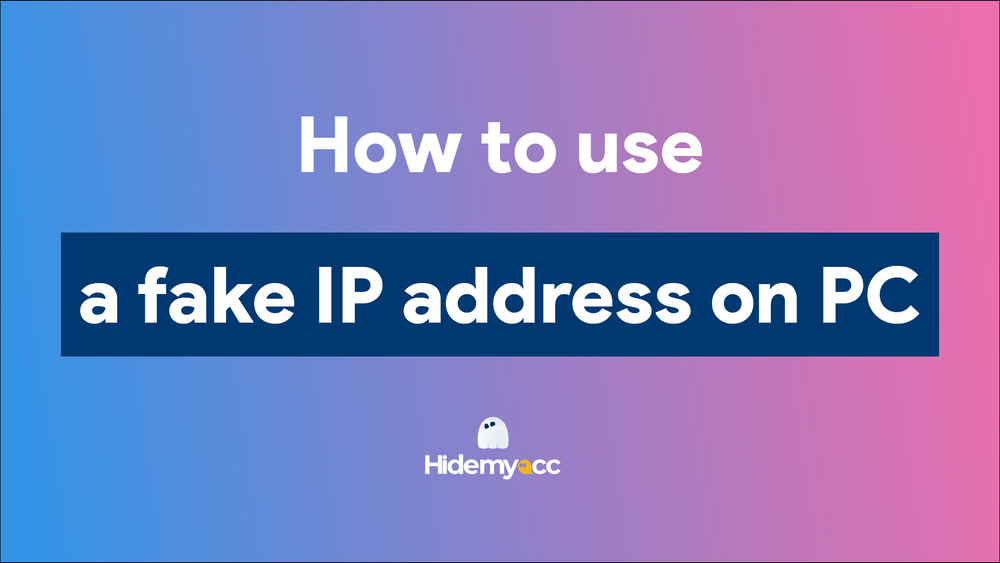If you are earning money online, then you must be familiar with the term browser fingerprinting. This is the technique that websites use to discreetly gather the configurations of software and device settings data from internet users through their browser when they're online.
This data is used to build up the user's browser fingerprint, including his identity and content that he is consuming. Therefore, websites can easily detect users and monitor all their online activities.
For a regular internet user, this might be quite annoying but not a serious threat. However, for people who are running multiple accounts to make money online, this is the main reason why their accounts get flagged as suspicious and suspended.
And there is little to no chance that you can appeal or recover banned accounts with platforms such as Google, Amazon, Etsy, eBay, Facebook Business, and other websites or social media that you are working on.
Why are your accounts getting banned?
Account Bans
An account ban is a restriction or suspension placed on a user's account by a website or online platform. Account bans can have various consequences, such as preventing the user from accessing their account or using certain features, removing content posted by the user, or even permanently deleting the user's account.
Account bans are typically used by websites and online platforms to enforce their terms of service, policies or community guidelines. These rules may prohibit certain behaviors, such as spamming, harassing, or sharing inappropriate content, and failure to comply with them can result in an account ban.
Account bans are an effective way for websites and online platforms to enforce their rules and policies, ensuring a safe and healthy community for their users. While some account bans may be justified, others may be the result of errors or misunderstandings. By understanding the reasons for account bans and taking steps to minimize the risk of violating website rules, users can reduce the possibility of receiving an account ban.
>>>> Learn more: What is shadow banning? How do you know if it’s happening
Reasons for Account Bans
There can be several reasons for an account ban, including:
- Violation of terms of service: As mentioned earlier, violation of a website's terms of service or community guidelines can result in an account ban. This can happen if you engage in activities that are considered harmful or inappropriate by the website.
- Suspicious activity: Some websites may flag and ban accounts that engage in suspicious activity, such as using automation tools or bots, or attempting to hide identity or hack into the website. Any spam activities are also prohibited.
- Multiple accounts violations: Some websites prohibit creating multiple accounts to avoid their restrictions or limits or other policy consequences. Therefore, people using many accounts on the same device suffer a big risk of getting banned. Websites can easily detect that your multiple accounts are using the same device or IP address.
How Account Bans are executed
Depending on the website or platform, account bans can be executed in various ways. Some websites may send a warning or notification to the user before banning their account, while others may ban the account without prior notice. Only a few websites may also provide a way for users to appeal their ban or request a review of their account.
Consequently, you need to review all the probable reasons that may lead to your account bans, whether it is your account behavior that is violating the website’s rules or your browser fingerprint has been detected and reveals that you are using many accounts to earn money on the site. Regarding your account behavior on websites, you need to ensure that all your activities are complying with the site’s policies.
What is browser fingerprinting blocking and spoofing?
In this case, many often attempt to block or spoof browser fingerprinting, hoping to protect their browser fingerprint from the website they want to access and reduce the risk of getting banned. Yet, this act does not help you access the web safely and even put you in a bigger risk, since websites will consider your attempts to hide your identity as suspicious behaviors and immediately restrict your accounts.
Even if you can successfully block or spoof a website, your accounts can still get banned. While blocking and spoofing browser fingerprinting can stop the site collecting some information regarding your browser, it is not a foolproof solution as other factors such as IP address, device ID, and user behavior can also contribute to bans. Therefore, a multi-pronged approach that includes faking browser fingerprinting, as well as using VPNs and adopting responsible online behavior, is necessary to minimize the risk of account bans.
Methods of blocking Browser Fingerprinting
There are several methods to block browser fingerprinting, including:
- Using a privacy-focused browser: Some web browsers, such as Tor and Brave, have built-in privacy features that can help block browser fingerprinting. These browsers may use advanced privacy settings, block third-party cookies, and use encryption to protect user data.
- Using browser extensions: There are several browser extensions, such as uBlock Origin and Privacy Badger, that can block scripts and trackers used for fingerprinting. These extensions work by analyzing the scripts used on a website and blocking those that are known to be used for fingerprinting.
- Adjusting browser settings: Some browser settings, such as disabling JavaScript or WebGL, can also help block browser fingerprinting. However, disabling these settings can affect the user experience on some websites, and some fingerprinting techniques can still work even when these settings are disabled.
Advantages and disadvantages of blocking and spoofing Browser Fingerprinting
The advantages of blocking and spoofing browser fingerprinting include increased privacy and reduced risk of account bans:
- Blocking browser fingerprinting helps users prevent websites from collecting data that can be used to track them across the internet or identify them uniquely.
- Spoofing browser fingerprinting helps users create a different fingerprint, thereby preventing websites from identifying them uniquely or associating their browsing history with their identities.
However, there are some obvious drawbacks you may face when using these methods:
- Some websites may block users instantly if they find out that they are trying to hide their identities.
- Some websites may require certain information to function properly, and blocking fingerprinting may prevent users from accessing certain features or content.
- Some websites may detect and block spoofing attempts, and some spoofing techniques may also affect the user experience or break certain website features.
Stop account bans with Hidemyacc
As discussed earlier, browser fingerprinting is a technique used by websites and online platforms to track user activity and identify unique users based on their browser configuration. This can lead to account bans if a user is flagged for suspicious activity or violating website rules.
You can prevent this with an antidetect browser. Antidetect browsers are specialized browsers designed to protect your privacy and prevent tracking by websites and online platforms. Using an antidetect browser like Hidemyacc can help you prevent account bans by creating new virtual profiles while hiding your true identity.
How Hidemyacc Antidetect Browser works
Hidemyacc antidetect browser uses advanced techniques to prevent browser fingerprinting and protect user privacy. Some of the features of Hidemyacc antidetect browser include:
- Multiple browser profiles: Hidemyacc allows users to create and switch between multiple browser profiles, each with a unique configuration and set of browser and device settings.
- Customized browser fingerprints: Hidemyacc allows users to customize browser fingerprints by modifying browser settings and adding random values to browser attributes.
- Integration for further protection: You can add proxies and extensions into Hidemyacc to mask IP addresses and log into accounts through cookies, making it difficult for websites to identify and track your activity based on IP addresses.
Benefits of using Hidemyacc to prevent account bans
Using Hidemyacc antidetect browser can help prevent account bans by making it difficult for websites to track and identify users based on their browser configuration. This can reduce the risk of being flagged for suspicious activity or violating website rules. By using an antidetect browser like Hidemyacc, users can protect their privacy and reduce the risk of receiving an account ban.
Conclusion
In conclusion, using an antidetect browser like Hidemyacc can be an effective way to prevent account bans by providing users with various virtual profiles. By using advanced techniques to protect user privacy and prevent tracking, Hidemyacc antidetect browser can help users avoid being flagged for suspicious activity or violating website rules.
Download Hidemyacc and start your 7-day trial now!
If you have any further questions, comments, or suggestions, feel free to contact us via Telegram, Skype, or Facebook Messenger support.






